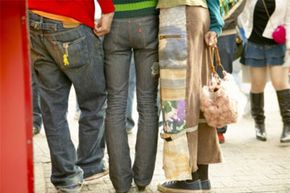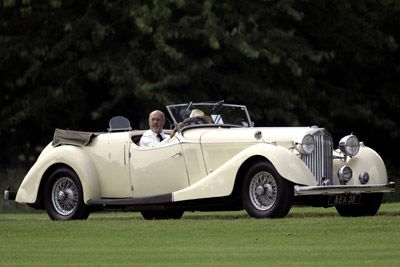While there have always been wealthy people living the life of leisure on money they have inherited, the term trustafarian refers to a particular subset of the wealthy. A combination of the terms trust fund and Rastafarian, the trustafarian is a 20th-century phenomenon, though it's not known exactly who coined the term. The word has appeared throughout pop culture in numerous articles relating to finance and economics, including major media outlets like the Huffington Post, The New York Times and The Village Voice. Author Brian Griffin published an entire book on the topic, "The Trustafarian Handbook: A Field Guide to the Neo-Hippie Lifestyle -- Funded by Mom and Dad," and Oxford even includes trustafarian in its dictionaries [source: Oxford Dictionaries].
So what exactly are a trustafarians? Typically they are wealthy, white adults, generally in their 20s, who are in many ways, modern-day hippies. They tend to draw scorn and disdain from members of traditional culture because their laidback lifestyle is supported entirely by their parents' money, often in the form of trust funds, (hence the trust in trustafarian) [source: Huffington Post]. Although they're decidedly well off, trustafarians imitate many of the cultural traditions of the Rastafarians, who represent a poor, oppressed social class.
Advertisement
The Rastafarian movement originated in Jamaica in the 1930s, combining aspects of Christianity and mysticism with an African political consciousness [source: Brittanica.com]. The movement is named after the Ethiopian emperor Haile Selassie I, whose name before becoming emperor was Ras Tafari. Rastafarians believe Selassie to have been the second coming of Christ [source: Brittanica.com]. Reggae music, now popular around the world, grew out of the Rastafarian movement. Also characteristic of the movement is the smoking of ganja (marijuana) for the purpose of meditation and prayer -- a habit the trustafarians have adopted for largely recreational purposes, with little or no religious significance.
Because trustafarians don't face any of the poverty or oppression the Rastafarians rose up in response to, the similarity between the two groups is mainly superficial. Some of the Rastafarian habits copied by the trustafarians include the following:
- Wearing their hair in dreadlocks. Not all trustafarians have dreadlocks, but those who don't often wear oversized hats designed to hold dreadlocks anyway.
- Wearing ethnic clothing such as a dashiki or a Nehru jacket, often ragged and unwashed
- Eating a vegetarian diet
- Smoking marijuana frequently [source: Griffin].
So who exactly are these trustafarians, and who is footing their bills?
Advertisement

